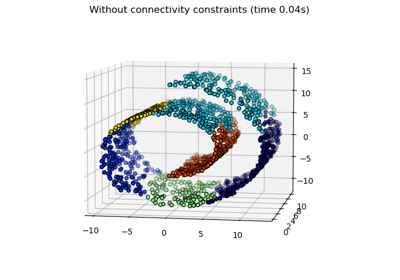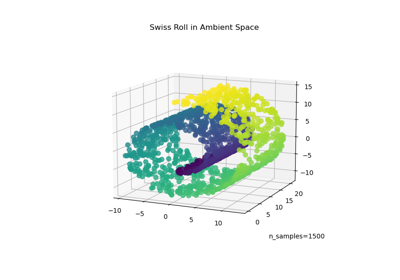make_swiss_roll#
- sklearn.datasets.make_swiss_roll(n_samples=100, *, noise=0.0, random_state=None, hole=False)[source]#
Generate a swiss roll dataset.
Read more in the User Guide.
Adapted with permission from Stephen Marsland’s code [1].
- Parameters:
- n_samplesint, default=100
The number of sample points on the Swiss Roll.
- noisefloat, default=0.0
The standard deviation of the gaussian noise.
- random_stateint, RandomState instance or None, default=None
Determines random number generation for dataset creation. Pass an int for reproducible output across multiple function calls. See Glossary.
- holebool, default=False
If True generates the swiss roll with hole dataset.
- Returns:
- Xndarray of shape (n_samples, 3)
The points.
- tndarray of shape (n_samples,)
The univariate position of the sample according to the main dimension of the points in the manifold.
Notes
The algorithm is from Marsland [1].
References
[1]S. Marsland, “Machine Learning: An Algorithmic Perspective”, 2nd edition, Chapter 6, 2014. https://homepages.ecs.vuw.ac.nz/~marslast/Code/Ch6/lle.py
Examples
>>> from sklearn.datasets import make_swiss_roll >>> X, t = make_swiss_roll(noise=0.05, random_state=0) >>> X.shape (100, 3) >>> t.shape (100,)
Gallery examples#

Hierarchical clustering: structured vs unstructured ward

